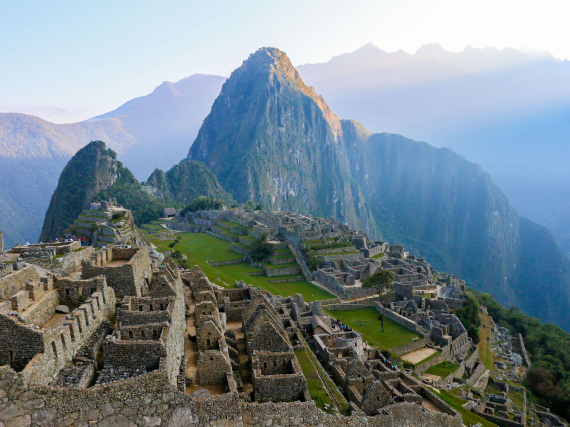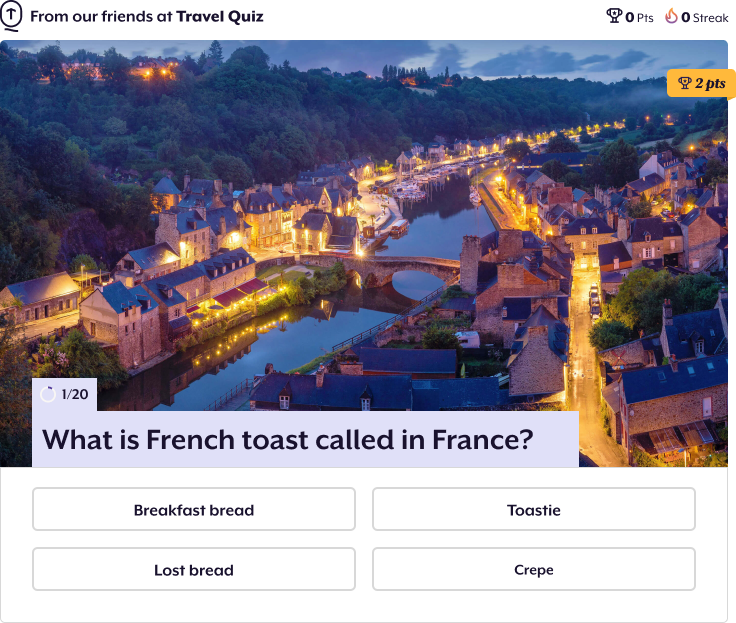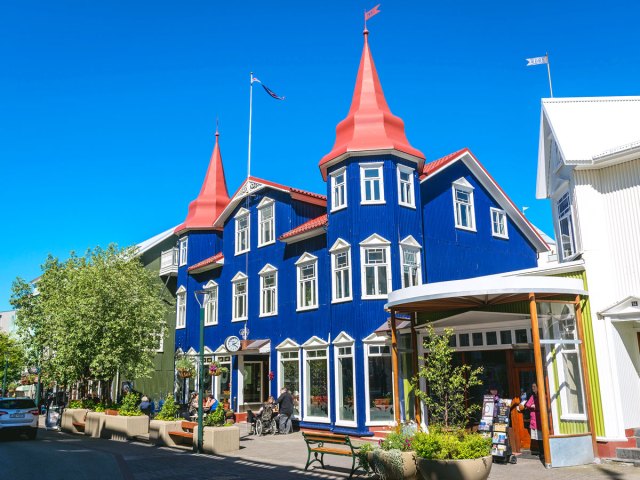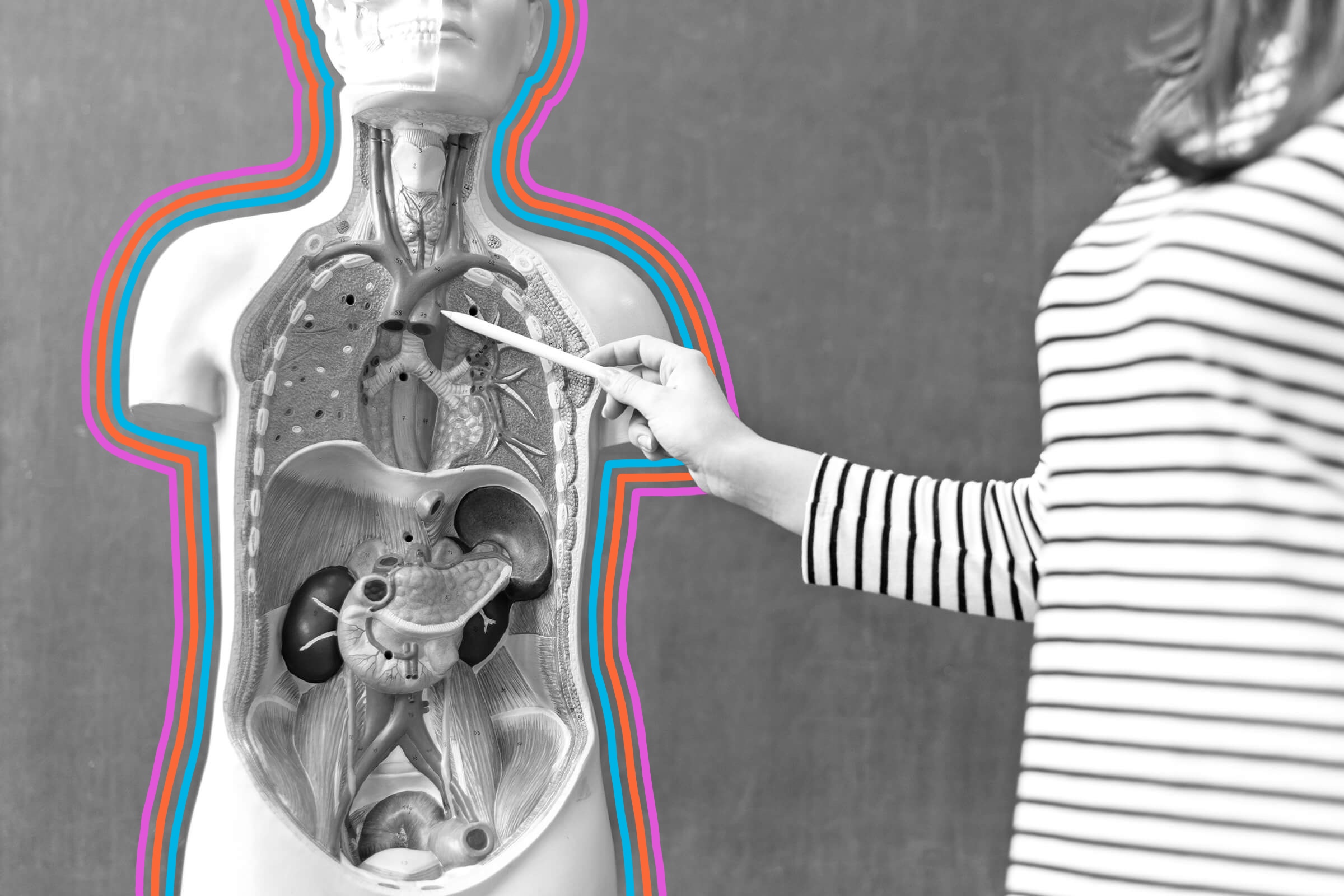While Americans are used to painted eggs and chocolates for Easter celebrations, countries around the world put their own unique spin on the springtime holiday. In many places, celebrations are centered around the Christian significance of the holiday. But in Sweden, for instance, Easter is also imbued with a bit of the Halloween spirit, and in Poland, people douse each other with water. Learn about 10 surprising Easter celebrations and traditions around the world.
France – The Flying Bells of Easter
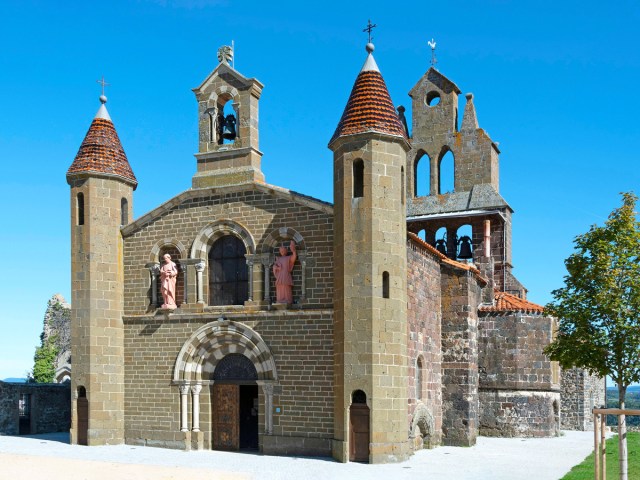
In the U.S., the Easter Bunny traditionally delivers candy to kids on Easter, but in France, these treats arrive courtesy of the flying bells (cloches volantes). On the Thursday before Easter, known as Maundy Thursday, church bells around the country go quiet. It’s a striking silence, considering that most of the time, France’s church bells ring out loudly on the hour.
Legend has it that, during this downtime, the bells grow wings and fly to the Vatican to mourn the death of Jesus and carry with them the heaviness of all those who also grieve. There, the bells are blessed by the Pope, and on their journey back to France, the bells collect eggs and other goodies to distribute to children across the country. On Easter morning, bells ring out, and children excitedly run out to their gardens and yards to hunt for the scattered treasures.
Germany – The Easter Egg Tree
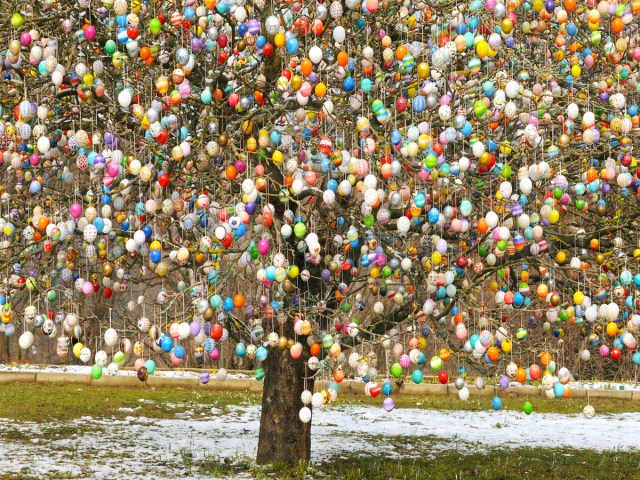
The exact origins of Ostereierbaum — or the Easter egg tree — have been lost over time, but this German tradition remains an important and delightfully festive part of the holiday. Each spring, bare tree branches are decorated with colorful egg ornaments, traditionally made of painted wooden eggs or hollowed-out shells. Some families choose to decorate trees in their natural surroundings outside, while others also collect branches to display and decorate inside, adding a festive pop of color to their living space.
It’s a tradition the Germans take quite seriously. In the country’s eastern town of Saalfeld, one family has been adding to the same Ostereierbaum since 1965. Every year, the family spends two weeks placing their vibrant hand-painted eggs on the masterpiece; they’ve hung more than 10,000 colorful ornaments over the years. In the spring of 2007, a tree at Germany’s Rostock Zoo even set a Guinness World Record for the largest Easter egg tree, decorated with a whopping 76,596 painted hens eggs.
Spain – The Dance of Death

One of the most Easter compelling celebrations in Spain is the Dance of Death — or Danza de la Muerte — that takes place in the small coastal town of Verges. On the Thursday before Easter, locals dress up in skeleton costumes and parade through the torch-lit streets as they reenact scenes from the Passion of Christ. A person carrying a black flag leads the procession, flanked by two children (also in skeleton costumes) carrying plates of ash in their hands. The final skeleton marches while carrying a clock, which is said to symbolize just how uncertain death really is.
Verges’ annual celebration began in the Middle Ages and today draws spectators from all over the region. The performance begins at 5 p.m., and the Passion procession starts at midnight, carrying on for several hours into the early morning.
Guatemala – Semana Santa Festival

One of the most visually arresting Easter celebrations in the world is the Semana Santa (Holy Week) Festival of Antigua, Guatemala. Each year, Guatemalans spend months designing intricate, colorful alfombras (carpets) to line the city — a UNESCO World Heritage site — for its celebrations. First, sand is layered onto the cobblestone streets; then, it’s covered in a combination of flowers, fruits, plants, and dyed sawdust to create the one-of-a-kind “carpets” that line the holiday’s religious procession route.
While each design is a labor of love for its respective artist, the carpets must be assembled just 24 hours before the Easter parades begin. Given their delicate nature, the vivid works of art are destroyed on impact as people parade over them, leaving behind streaks of sacrificial rainbows — they look right at home alongside Antigua’s colorful Spanish Baroque-influenced architecture.
Sweden – Easter Witches
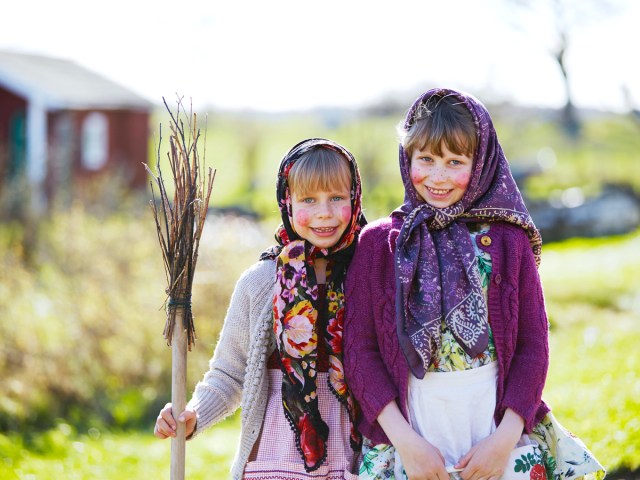
On Maundy Thursday (Skärtorsdagen), Swedish children dress up as witches and go door-to-door wishing people a happy Easter, in exchange for candy. The costumes are often elaborate — big rosy cheeks and exaggerated freckles are painted on children’s faces, kerchiefs are tied around their heads, and shawls are draped over baggy clothes.
The tradition originated with the Swedish legend that, on Maundy Thursday, witches supposedly flew off on broomsticks to the legendary island of Blåkulla to dance and feast with the devil. As the witches returned, fires were lit to scare them off course, which is why Sweden (and some parts of Finland) still carries on with the tradition of Easter weekend bonfires to this day.
Australia – The Easter Bilby

The Easter Bunny takes a backseat to the long-eared, pointy-nosed Easter Bilby in Australia. So what exactly is a bilby? It’s an adorable marsupial that’s native to the country and happens to be rabbit-sized. Ironically, the endangered species is actually threatened by rabbits, which were only introduced to Australia by European settlers in the late 1700s.
The Easter Bilby tradition began in 1968, when a nine-year-old girl named Rose-Marie Dusting wrote a story called Billy The Aussie Easter Bilby. She later published the story as a book to raise awareness for the endangered species, and in 1991, the Foundation for Rabbit-Free Australia began an Easter Bilby campaign to replace the Easter Bunny. Some major candy manufacturers began selling chocolate bilbies, and while the movement isn’t as popular as it once was, the chocolate Easter Bilby is still a beloved seasonal treat, and proceeds go towards conservation efforts for the marsupial.
Poland – Wet Monday
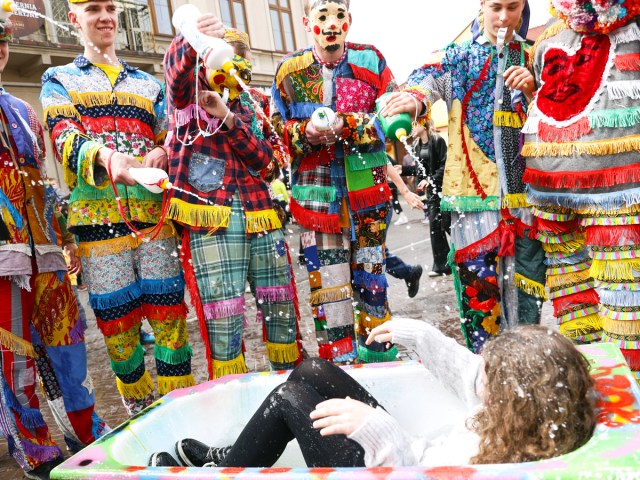
Early spring weather might still be too cold for a water fight, but in Poland, the tradition must go on. Wet Monday — or Smigus Dyngus — occurs on Easter Monday, when people take to the streets to soak each other using buckets, water guns, balloons, or whatever else they can find to get the job done. Traditionally, men would only throw water on women, but over the years, the custom has opened up to anyone who wants to participate.
Though its origins are unclear, Smigus Dyngus dates back to at least the 14th century and is thought to be based on baptismal symbolism or female fertility rituals. Similar Easter celebrations also take place in Ukraine (Watering Monday), Czechia and Slovakia (Watering), and Hungary (Sprinkling).
Norway – Easter Crime

Easter in Norway is a popular time to cozy up with a good old-fashioned crime novel. The tradition started in 1923, when, on the Sunday before Easter, a new book about a train robbery was advertised on the front pages of a Norweigen newspaper. Many didn’t realize it was an advertisement and were hooked on the thrilling story — it drummed up huge promotion for the book, and the new tradition was born.
There are three public holidays for Easter in the Nordic nation: Maundy Thursday, Good Friday, and Easter Monday are all time away from school and work, allowing for a longer holiday break than other parts of the world. Residents consider reading “Easter crime” during this downtime as cherished a tradition as chocolate treats and skiing.
Italy – Explosion of the Cart
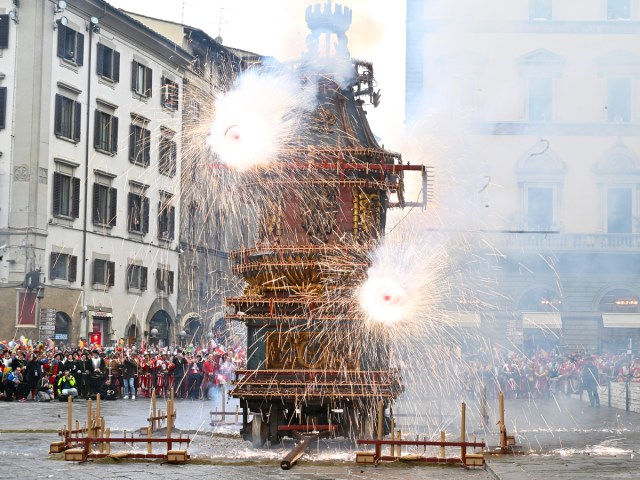
Easter (Pasqua) is a huge holiday in Italy. But you won’t find the typical bunny rabbits or chocolate eggs as part of the celebrations — the rituals focus on the religious aspects of the holiday, often consisting of solemn processions, prayer, and dramatic religious reenactments.
One of the most fascinating Italian Easter celebrations takes place in Florence, where locals celebrate a 350-year-old tradition known as Scoppio del Carro, or “explosion of the cart.” A massive, ornately decorated wagon is packed with fireworks and led through the city by drummers, city officials, and people in gloriously gilded 15th-century costumes. They carry the cart to the Duomo where, during Easter mass, the Archbishop of Florence lights the fuse, setting off an extravagant fireworks display. The ritual dates back to the First Crusade and is a celebration of Jesus’ resurrection.
Bulgaria – Easter Egg Battle
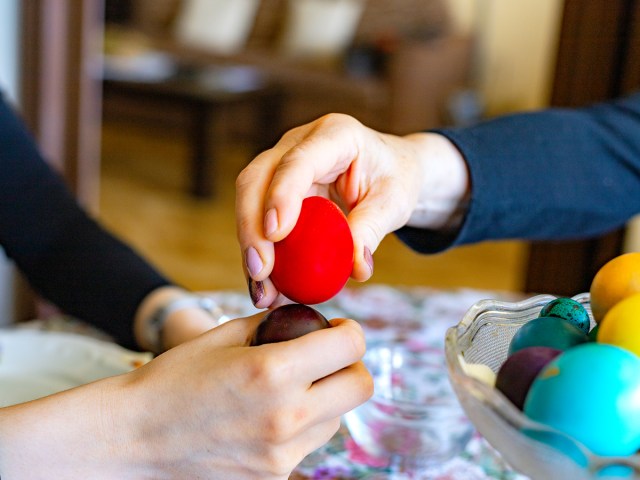
Easter, known as Velikden in Bulgaria, is celebrated with food and family like in many places around the world. But one of the most entertaining traditions is the country’s unusual Easter egg fight — also known as egg tapping — which takes place on Easter Sunday morning.
Instead of actually throwing the beautifully dyed eggs at other people, people take turns smashing their eggs against other participants’ eggs. Whoever manages to keep their egg intact is victorious; the winner keeps the egg until the following year and will reportedly have good luck in health, wealth, and happiness for the rest of the year. The custom originated during the medieval times in Europe and is celebrated on Easter in several other places around the world, including Greece and the Netherlands.
More from our network
Daily Passport is part of Optimism, which publishes content that uplifts, informs, and inspires.

